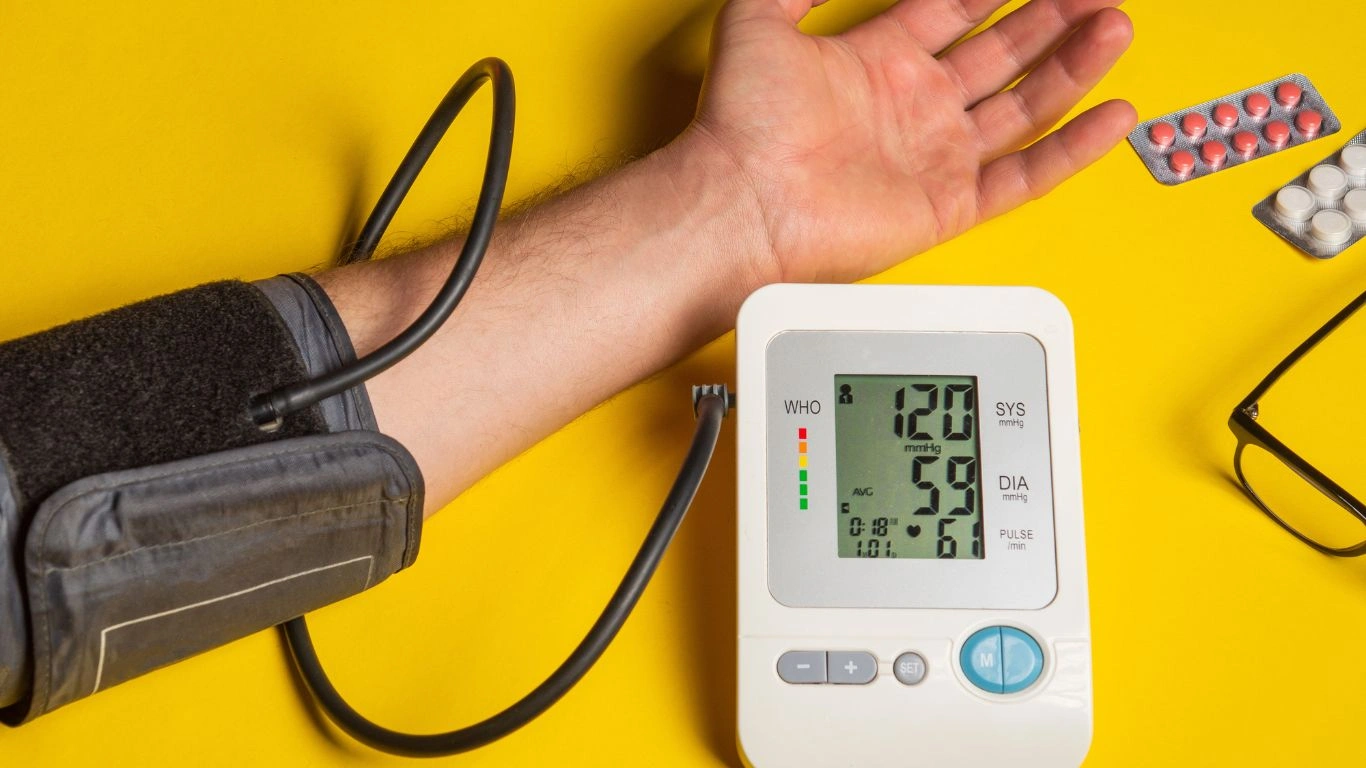How to Walk Properly for Heart Health: Simple Habits That Transform Lives
If you’ve ever wondered how to walk properly for heart health, you’re definitely not alone. As an internal medicine physician who’s worked with countless patients managing hypertension, I’ve seen how small, consistent habits like walking can be absolute game changers for cardiovascular wellness. The trick? It’s not just about doing it—it’s about doing it right. And trust me, there’s more to proper walking than just putting one foot in front of the other. Let’s talk about how walking, when done mindfully, can genuinely protect your heart and help you feel better day by day.
Why Walking Deserves a Place in Your Heart Health Toolkit

Most people underestimate walking because it seems… well, basic. But as someone who’s been deep in the trenches of managing hypertension with patients for over a decade, I can confidently say that walking is one of the most underrated forms of medicine. You don’t need a fancy gym membership, and you don’t need to run marathons. You just need your body, a pair of decent shoes, and a bit of intentionality.
So let’s get this straight: walking can lower your blood pressure, reduce your resting heart rate, improve insulin sensitivity, and even boost mood—all of which directly support heart health. And yes, there’s actually a right way to do it. That’s where the magic happens.
The Science Behind Walking and Heart Health

Walking, when done properly, activates large muscle groups in a rhythmic way, which improves circulation and reduces the workload on your heart over time. It also encourages your blood vessels to become more flexible, which is key for controlling blood pressure.
Here’s what I always explain to patients who are newly diagnosed with hypertension or prehypertension:
- Consistency > Intensity: A 30-minute brisk walk five times a week is better than one intense workout followed by four sedentary days.
- Heart Rate Zone Awareness: Walking at a moderate pace that gets your heart rate up just enough (usually 50–70% of your max HR) is ideal for heart health.
- Stress-Relieving Bonus: Done mindfully, walking is a great way to bring cortisol levels down, which has indirect benefits for your cardiovascular system.
Fun fact: Studies show that walking 150 minutes a week can reduce your risk of cardiovascular disease by up to 31%. That’s huge, and it’s achievable without any fancy gear.
How to Walk Properly for Heart Health: Getting the Basics Right

Start With the Right Posture
It might sound like something your mom would say, but posture matters—a lot. When you slouch, not only does it throw off your stride, it can also strain your lower back and hips, leading to pain that makes you less likely to keep walking.
Here’s what I tell my patients during our office walks (yes, I do those!):
- Stand tall, with your head aligned over your shoulders and your gaze looking about 10–20 feet ahead.
- Engage your core gently (think: bracing, not clenching).
- Keep your shoulders relaxed but not drooping forward.
Focus on Your Foot Strike
Believe it or not, most people don’t realize they’re pounding the pavement inefficiently. Heel-to-toe is the way to go. You want to land softly on your heel and roll through your foot to push off with your toes. It keeps your joints happy and helps you maintain a smooth stride.
Personal tip: If you’re walking and feel like your steps are “slapping” the ground, your shoes may be too stiff or worn out—or your stride might be too short and choppy. I always recommend reviewing walking shoes every 6–8 months depending on mileage.
Don’t Underestimate Your Arm Swing
This one’s more important than people think. When you swing your arms naturally (bent at about 90 degrees), it not only helps you stay balanced, but it also encourages a brisk pace. Plus, you’ll burn more calories and engage your upper body muscles a bit more—win-win!
Breathing Rhythmically
If you’re huffing and puffing five minutes into your walk, you’re either going too fast or not breathing properly. Breathe in through your nose for two steps, out through your mouth for two more. Keep it easy, smooth, and consistent. This helps oxygenate your blood more efficiently and supports cardiac output.
Remember: The goal is to move in a way that feels good, energizing, and sustainable. You’re not training for a competition—you’re caring for your heart.
How to Make Walking a Habit That Sticks (Even on Busy Days)

Let’s be honest: between clinic hours, charts, and life stuff, I know how tough it can be to fit in something as “simple” as walking. I’ve had patients tell me they feel guilty because they think they need to block off a full hour, get into athletic wear, and make a whole production out of it. Nope. That mindset just sets you up for failure.
Here’s the reality: if your goal is heart health, you don’t need perfection—you need consistency. And that’s the sweet spot. I tell my patients to think of walking like brushing your teeth. Short. Regular. Non-negotiable.
Micro-Walks Matter
You can totally hit your heart-health goals with 10- to 15-minute walking blocks. Park further away. Take stairs. Walk during phone calls. I once had a patient who started doing five-minute loops in her backyard between meetings—and guess what? Her blood pressure dropped 12 points over two months.
Use Technology to Your Advantage
Whether it’s a smartwatch or a step counter app, tracking progress gives that little dopamine hit of motivation. I personally use my Apple Watch to keep tabs on heart rate zones when I walk patients around the clinic courtyard. You don’t need to obsess over numbers, but a gentle nudge never hurts.
Pair It With Something Enjoyable
One of the easiest ways to turn walking into a habit is to anchor it to something you genuinely enjoy. A podcast, phone call with a friend, or even a favorite playlist. I always say: if your walk feels like a chore, you’re doing it wrong.
Common Walking Mistakes That Can Hurt Your Progress

Okay, real talk. Just because walking is low-impact doesn’t mean it’s risk-free. I’ve seen more than a few folks develop joint pain, plantar fasciitis, or even worsening hypertension symptoms simply because they weren’t walking *properly*.
Let me break down a few walking habits that could be working against you—and how to fix them:
- Walking too slowly: Leisurely strolls are nice, but for heart health benefits, aim for a pace where you can talk, but not sing. This typically lands you in the moderate-intensity zone your heart needs to strengthen.
- Wearing the wrong shoes: Footwear matters. If your shoes are too tight, too flat, or lacking support, you’ll start to notice pain—usually in your heels, knees, or lower back. I recommend patients get fitted at a specialty store if they walk more than 3x/week.
- Overstriding: Bigger steps don’t mean better steps. Stretching your legs out unnaturally can strain your hips and knees. Keep your stride natural, with your foot landing under your body, not way out in front.
- Ignoring terrain: Slopes, uneven sidewalks, and gravel can be ankle nightmares if you’re not careful. Mix it up for strength and balance training, but stay alert to avoid missteps.
Walking With a Purpose: Elevating Your Routine for Better Cardiovascular Gains

Once you’ve got the basics down and feel good doing it, you might want to take things up a notch. I love encouraging my patients to turn their walks into intentional heart-boosting sessions. Not with crazy HIIT moves—just thoughtful tweaks.
Add Intervals for a Gentle Cardio Challenge
Try alternating between a moderate pace and a brisk power walk every few minutes. Something like 3 minutes at a conversational pace, 1 minute faster. Rinse and repeat. This helps push your heart a little more and keeps things interesting.
Engage More Muscles
Walking uphill, adding light wrist weights, or swinging your arms with intention will get more of your body involved. I tell patients who’ve been walking for months with little change in numbers to give this a try—it often jumpstarts new progress.
Try Walking Meditation
This might sound woo-woo, but hear me out. Walking meditations, where you focus on your breath, steps, and surroundings, are excellent for managing stress. And less stress = lower cortisol = happier heart. I often lead short mindfulness walks at our wellness events and patients always leave feeling lighter, both physically and emotionally.
What to Watch: Signs You’re Walking for Heart Health—Not Just Steps
So how do you know it’s working? Besides how you feel (and trust me, you’ll feel it), there are a few subtle signs that your heart is thanking you:
- Lower resting heart rate: Check your pulse first thing in the morning before getting out of bed. If it’s dropping over time, that’s a great sign of cardiovascular improvement.
- Improved blood pressure readings: I’ve had hypertensive patients reduce or even eliminate meds just by building a smart walking routine. Of course, never stop meds without guidance—but track those numbers.
- Faster recovery: If your heart rate returns to baseline more quickly after a brisk walk, that’s a sign your heart is getting more efficient.
- Better energy: When walking stops feeling like a chore and starts feeling like a craving—that’s when you know it’s clicked.
Walking isn’t flashy. It doesn’t go viral on TikTok. But it works. And when you learn how to walk properly for heart health, the results are real, tangible, and often life-changing. I’ve witnessed it over and over again—patients who went from struggling up stairs to confidently strolling through their neighborhoods like total pros.
Making It Personal: How I Coach My Patients to Walk for Heart Health

One of the most fulfilling parts of my work isn’t just prescribing medication—it’s helping patients take their health into their own hands. And walking is often where we start. Not only is it accessible and safe, but it’s also an empowering way to reconnect with your body, especially when your heart needs a little extra care.
Let me tell you about Mark, one of my long-time patients. He was 62 when he first came to see me with uncontrolled hypertension and borderline diabetes. We talked lifestyle, but walking really clicked with him. He started with five minutes a day, then slowly increased to 30 minutes every morning while listening to blues music. Fast forward eight months? Blood pressure: down. A1c: normal. Energy: through the roof. He even started walking with his wife and neighbors, turning it into a community thing. That’s the beauty of it—it snowballs in the best way.
Build a Walking Routine That Fits *You*
Your walk doesn’t have to look like anyone else’s. Maybe it’s in your hallway, around your office building, or during your lunch break. Some of my patients use walking poles, others walk with their grandkids or dogs. One patient does “walking meetings” with her team at work. It’s all valid. The key is doing it with intention and regularity.
And if you ever feel like you’ve hit a plateau? That’s usually the body’s way of asking for a new challenge. Try a new trail, walk with a friend, add light intervals. The more variety you add (safely, of course), the more engaged your heart and muscles stay.
Tracking Progress the Right Way

Now, let’s talk about tracking progress. Not in a hyper-obsessive, spreadsheet-filled kind of way, but in a *celebratory* way. Data should encourage you—not shame you.
- Step counts: Aiming for 7,000–10,000 steps daily is a solid benchmark, but even 3,000–5,000 can be a powerful start if you’re just getting moving.
- Heart rate: Use a smartwatch or fitness band to check if you’re hitting that moderate zone (roughly 50–70% of your max HR). That’s the sweet spot for improving cardiovascular function.
- Blood pressure logs: Take readings before and about 30 minutes after a walk a few times a week. I have patients email or bring their logs into visits—it tells a clearer story than numbers in isolation.
Personal tip: I encourage my patients to celebrate non-scale victories too: better sleep, improved mood, clearer thinking. Those count. Those are wins.
Pairing Walking With Other Heart-Healthy Habits
Walking works best when it’s part of a bigger wellness picture. You don’t need to overhaul your entire life overnight—just start stacking small habits. That’s the magic combo I see over and over again.
Hydrate, Always
Sounds basic, but if you’re walking and not staying hydrated—especially in warmer months—you’re missing an important piece. Dehydration can elevate your heart rate and blood pressure, which kind of defeats the point. I always say: if you’re walking, you should be sipping.
Prioritize Sleep
A well-rested body recovers better and walks stronger. Poor sleep raises cortisol, increases blood pressure, and reduces the effectiveness of physical activity. Think of sleep as your secret weapon for getting more out of your walks.
Don’t Skip Protein
Walking burns energy, and if you’re building a new routine, you need nutrients to support muscle recovery and stamina. A balanced diet with lean protein and whole grains keeps your engine running smoothly. Quick plug here—talk to a registered dietitian if you’re unsure where to start. We collaborate with several in our clinic.
How to Walk Properly for Heart Health: Final Tips That Stick
If I could wrap this whole article up with a bow, I’d say this: walking is powerful, but how you walk and why you walk matters just as much as how often. Intentional movement, especially in the context of heart health, is something we often overlook because it feels too simple. But simple doesn’t mean ineffective.
Let’s do a little recap to make it stick:
- Walk with proper form: upright posture, natural stride, heel-to-toe motion.
- Aim for consistency over intensity—5 days a week is ideal.
- Listen to your body and make adjustments when needed.
- Track progress, but don’t get bogged down in numbers.
- Celebrate your wins—every walk is a step forward for your heart.
And remember, if you ever feel stuck, bored, or unsure? Reach out to your primary care provider—or even better, a wellness-focused internal medicine doc (wink wink). We’re here to guide you, cheer you on, and help your heart beat stronger for years to come.
References
- National Institutes of Health
- Health.com
- American Heart Association
- Centers for Disease Control and Prevention
Disclaimer
This article is intended for educational and informational purposes only and is not a substitute for professional medical advice, diagnosis, or treatment. Always consult your physician or qualified healthcare provider with any questions you may have regarding a medical condition. As always, if you’re considering starting a new fitness routine, especially if you have underlying heart issues, it’s wise to speak with your doctor first.

Dr. Gwenna Aazee is a board-certified Internal Medicine Physician with a special focus on hypertension management, chronic disease prevention, and patient education. With years of experience in both clinical practice and medical writing, she’s passionate about turning evidence-based medicine into accessible, actionable advice. Through her work at Healthusias.com, Dr. Aazee empowers readers to take charge of their health with confidence and clarity. Off the clock, she enjoys deep dives into nutrition research, long walks with her rescue pup, and simplifying medical jargon one article at a time.






